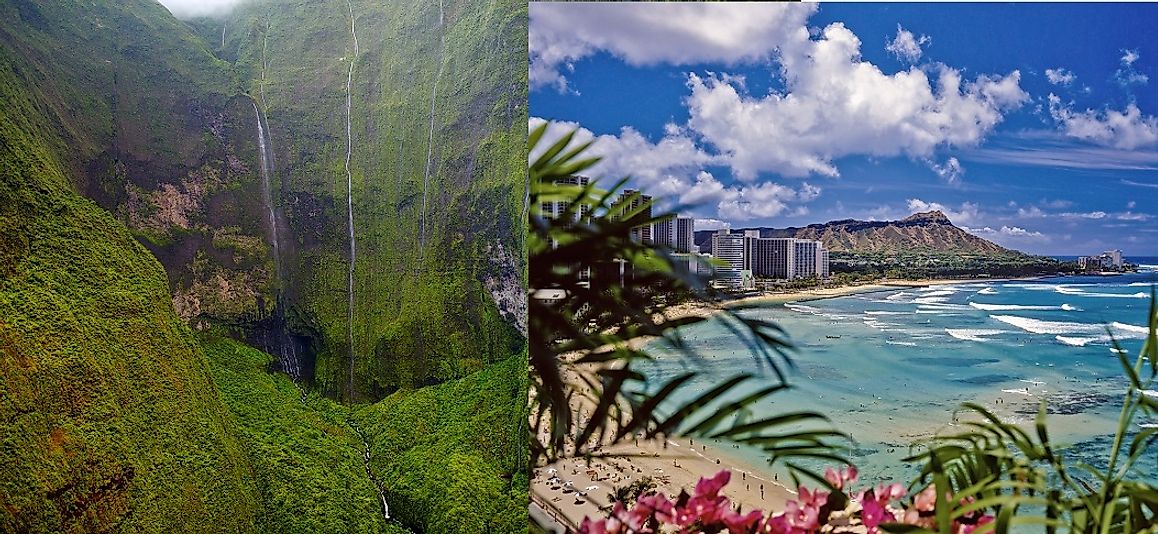What Is Orographic Precipitation?

Orographic Effect
Orographic precipitation, whether snowfall or rainfall is the result of the Orographic Effect or what follows when flowing air comes into contact with a rising slope and travels upland. When the flow of air is interrupted by a hill or mountain and it is forced to rise, it can cause disturbances in the weather system. As the weather system moves up along a mountain, there are changes in temperature and pressure. A hill or mountain is warmed by the sun, which in turn heats the air flowing just above it. This is called an anabatic wind, and when it rises above the top of the crest is warmer than the air around it and rises through convection. As this warm air rises over the top, it gradually expands and cools till it condenses into water vapor and forms cumulus clouds. These then produce rain and even thunderstorms.
Rain Shadow
The precipitation typically falls on the top and windward sides of the mountain (the side where the air traveled up). When the air descends on the opposite side, or the leeward side, it has lost most of its moisture due to the rainfall. Descending air also gets warmer as it comes back into contact with the heat of the troposphere, which absorbs the remaining moisture and creates a dry region called a rain shadow. In parts of the world with consistent seasonal winds, a wetter climate prevails in regions along the windward side of a mountain or mountain range. The areas around the leeward side are relatively drier as the orographic precipitation removes all moisture from the rain shadow.
Effect on Meteorology
Precipitation influenced by the terrain is a major factor by which meteorologists forecast local weather. Orography, or elevated terrain, plays a vital role in the type, intensity and duration of precipitation. Studies have shown that the width of the land barrier, steepness of the slope and the speed at which the air travels upward define the amount and intensity of orographic precipitation. Computer simulations have demonstrated that narrow sides and steeper slopes produce stronger updrafts, resulting in stronger vertical speeds, which in turn enhanced the amount of the precipitation.
Notable Locations of Occurrence
Some places of the world are well known for their orographic precipitations. Mountain rainfall is common on oceanic islands like Hawaii and New Zealand. In these places, much of the prevalent rainfall is on windward sides and the opposite regions remain comparatively dry, sometimes almost desert-like. This phenomenon results in substantial disparities in rainfall. Coastal areas receive significantly less rain (20 to 30 inches or 510 to 760 mm) per year than the interior uplands, which receive over 100 inches (2,500 mm) per year. Leeward coasts are particularly dry. For example, in Hawaii, Waikiki gets less than 20 inches (510 millimeters) of annual rainfall while high regions like Wai’ale’ale on Kaua’i are extremely wet, receiving 475 inches or 12,100 millimeters. Another region distinguished for orographic precipitation is the Pennine Mountain range in northern England. Manchester on the west of the Pennines receives more rain then Leeds on the east, which receives less due to a rain shadow of 12 miles from the mountains.











